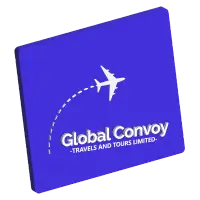In today’s digital age, social media platforms have transformed the way people explore the world not just physically, but virtually. Before travelers book flights or pack their bags, they often turn to Instagram, Facebook, YouTube, TikTok, and travel blogs to discover, research, and decide where to go. Social media has become one of the most influential tools shaping tourist destination decisions across the globe.
So, how exactly do social media platforms affect tourists’ choices of destinations?
1. Inspiration Through Visual Content
The old saying “a picture is worth a thousand words” has never been more true. Platforms like Instagram and Pinterest are filled with breathtaking images and videos of destinations around the world. A single viral photo of a hidden beach, a mountain hike, or a luxury resort can inspire thousands to visit that location. Influencers and travelers showcase their experiences in visually compelling ways, making destinations more appealing and tangible to others.
2. Real-Time Reviews and Recommendations
Unlike traditional travel brochures or ads, social media offers real time, peer generated reviews and experiences. Travelers often trust content shared by other tourists more than official advertisements. Reading a caption, watching a vlog, or scrolling through comments provides insight into what a destination is really like the good, the bad, and the unexpected.
3. Influencer Marketing and Destination Branding
Travel influencers play a key role in shaping travel trends. When an influencer with a large following visits a destination and shares their experience, it can greatly increase interest in that location. Many tourism boards and brands now partner with influencers to promote their destinations, using carefully curated content to build a brand image that appeals to a specific audience.
4. User-Generated Content as Social Proof
Tourists often look for validation before choosing a destination. Seeing hundreds or thousands of people posting about the same destination whether it’s Bali, Dubai, or Cape Town creates a form of social proof that it is “worth visiting.” This psychological effect can significantly impact decision making, especially among younger travelers and digital natives.
5. Customized Travel Planning and Discovery
Social media algorithms show users content based on their interests and browsing behavior. If a user frequently engages with travel content, their feed is likely to display posts about new destinations, tips, or travel hacks. This personalized content stream helps tourists discover off the beaten path places or trending locations they might not have considered otherwise.
6. Engagement and Interaction
Social media also allows tourists to directly engage with destinations. They can comment on posts, ask questions, and receive responses from tourism boards, hotels, or fellow travelers. Hashtags and geotags also make it easy to explore content from specific places, making the research process more interactive and dynamic.
7. Fear of Missing Out (FOMO)
The constant stream of stunning travel content often creates a sense of FOMO the Fear of Missing Out. When users see friends, influencers, or celebrities enjoying exotic destinations, it can trigger a desire to experience those places themselves. This emotional response drives spontaneous travel decisions and increases tourism to certain trending locations.
8. Crisis Management and Destination Reputation
On the flip side, social media can also impact a destination negatively. Incidents of poor service, safety concerns, or environmental issues can quickly go viral and damage a location’s reputation. Destinations now have to monitor and manage their online image carefully, as a single negative post can influence thousands of potential tourists.
Conclusion
Social media platforms are more than just tools for communication they are powerful agents of influence in the travel and tourism industry. From creating destination awareness and shaping perceptions to driving booking decisions, social media has redefined how people choose where to travel. For destinations, tourism marketers, and businesses, understanding and leveraging this influence is key to staying competitive in an increasingly digital world.






